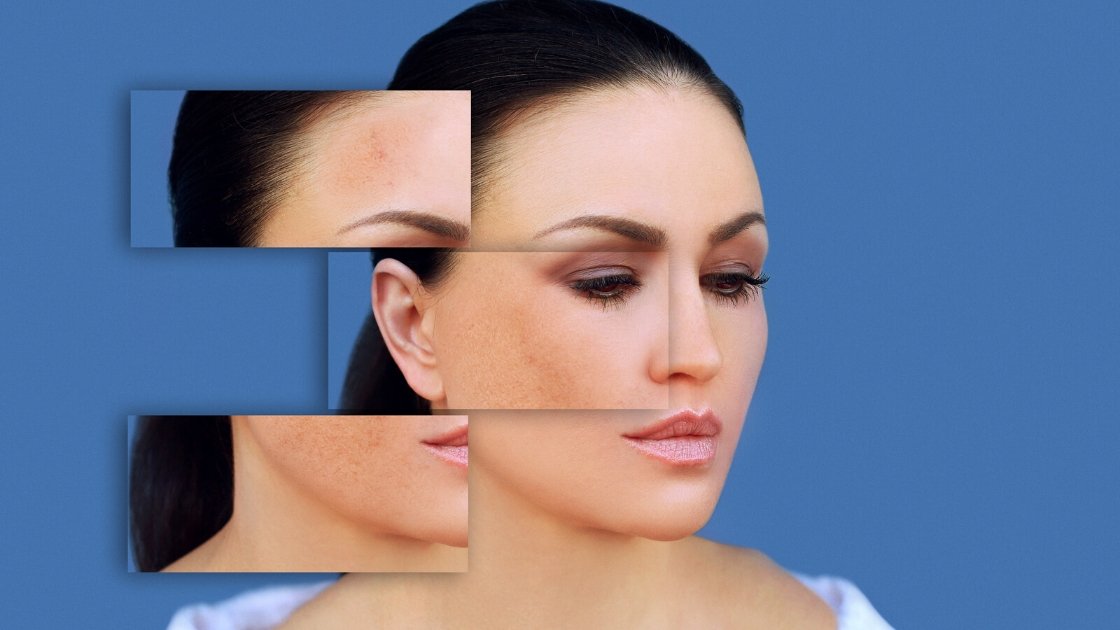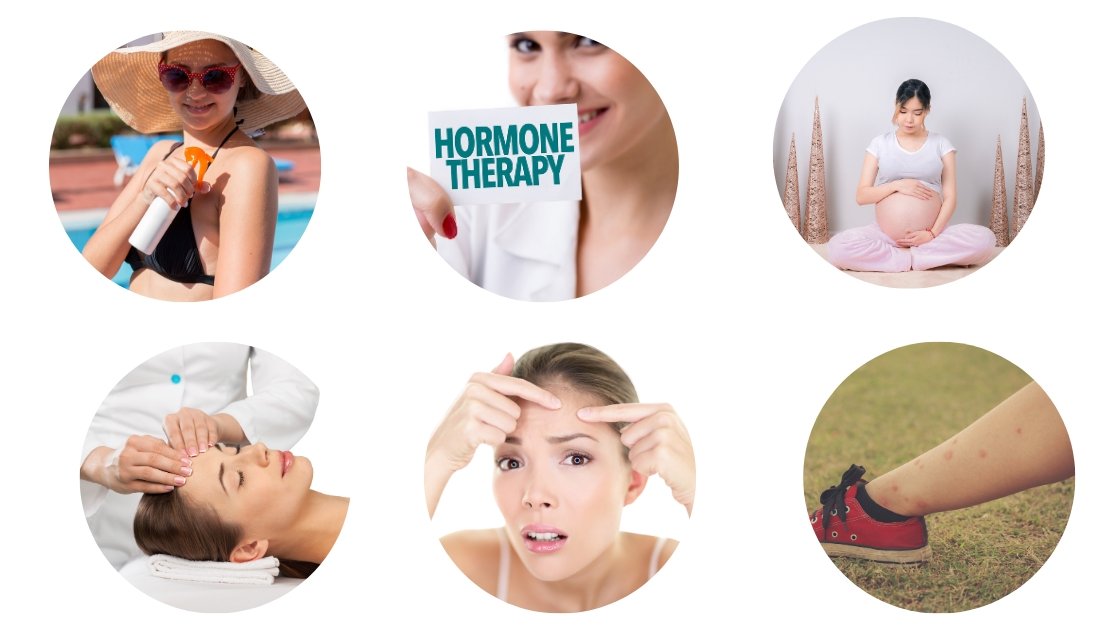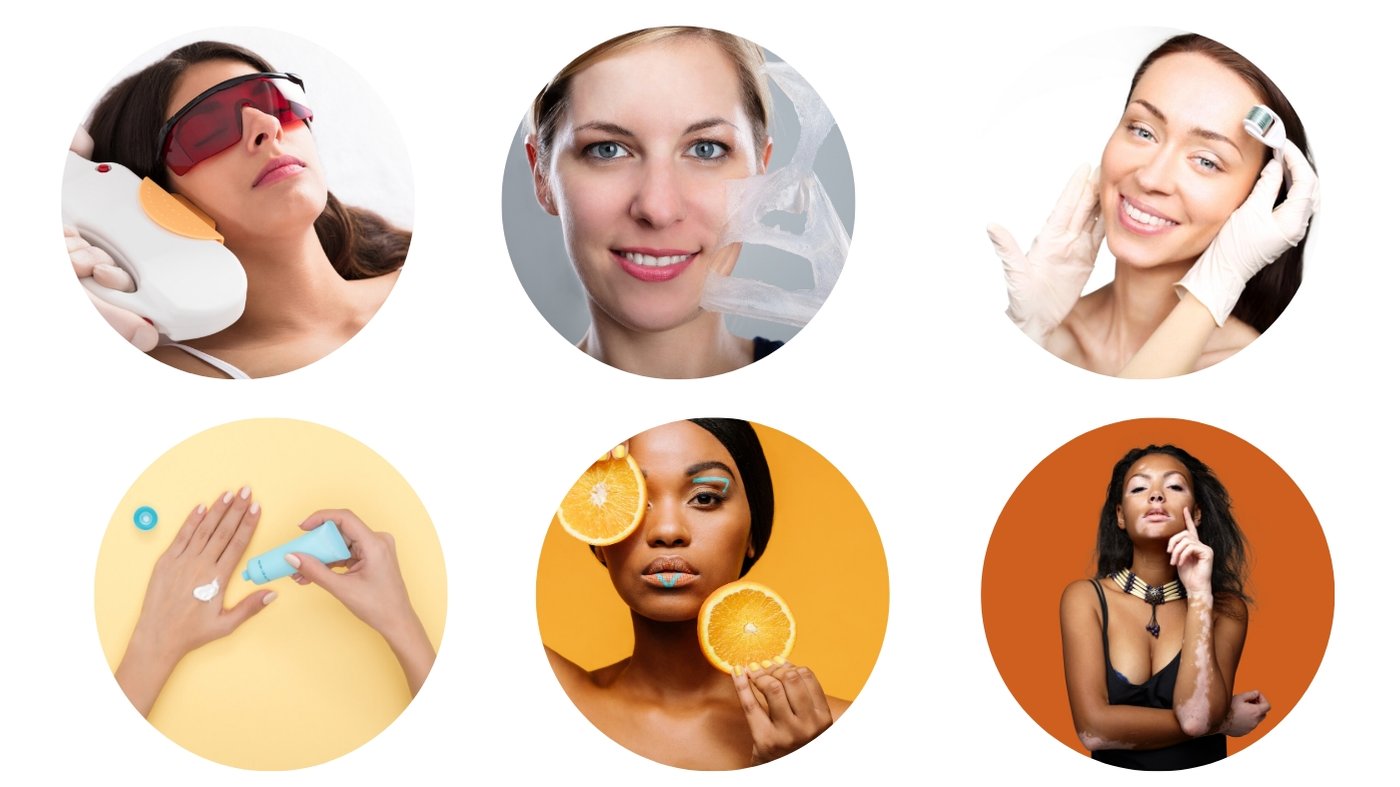How to Treat Hyperpigmentation: Skin pigmentation or hyperpigmentation is a skin condition in which dark patches appear on the skin. Wondering how dark the patches should get for them to be counted as hyperpigmentation? Well, any tone of color darker than the color of your own skin is hyperpigmentation.
Okay, there’s no need to panic. The usual dark spots you might have had for a while or even some years don’t count. But how do you know?
What exactly is hyperpigmentation again?
Hyperpigmentation is in fact the excessive production of melanin in your ski (what’s melanin? Melanin is the pigment produced in the skin. In fact, melanin determines your skin color). In this case, an excessive deposit of the brown pigment produced by melanin on is left on your skin.
This is usually caused by a variety of factors which affect melanocytes, the cells which produce melanin.
Depending on where hyperpigmentation occurs and what leads to them, the condition is scientifically called ‘melasma’ or ‘chloasma’ (you might have also heard the term ‘pregnancy mask’), and ‘lentigines’.
If it occurs to areas exposed to the sun, such as the face and hands, it is called lentigines (also known as age or liver spots). But in case hormonal changes are responsible for dark patches on the face, abdomen, or other areas, the condition is referred to as melasma or chloasma. Both of them are somewhat similar in appearance.
In addition to these, freckles, acne scars, injuries, wounds, surgery marks, psoriasis scars, or irritations resulted from skincare products may also cause hyperpigmentation.

Why does hyperpigmentation occur?
Hyperpigmentation may occur or become worse because of a variety of reasons. Some of these include:
- The UVA or UVB rays of the sun
- Hormonal changes (especially in women)
- Pregnancy
- Thyroid problems
- Hormonal medication (such as birth controls)
- Anti-epileptics
- Sunbeds or phototherapy
- Acne breakouts
- Injuries and bug bites

Is there a chance I got it from my great grandmother?
Some people think that hyperpigmentation is a hereditary condition. The thing is, there have been no records proving the claim. However, people with a family history of the condition may also be more prone to skin hyperpigmentation, mainly because of the type of their skin, which, incidentally, is hereditary to some extent.
What are the symptoms of hyperpigmentation?
When patches of the skin mainly on your face and sometimes the hand change to a tone of brown or gray color, it is a sign of hyperpigmentation. You can recognize the condition by only its appearance, as it doesn’t itch, hurt, or sting, neither does it change the texture of your skin.
In order to make sure of your condition, you need to visit a dermatologist. They will confirm the case either by closely examining it or sending a small sample of your skin for biopsy.
How to cure hyperpigmentation?
Unfortunately, as of today no effective cure has been discovered for this condition. But you can improve its appearance using a variety of treatments, or prevent its occurrence in the first place.
If hyperpigmentation is caused by pregnancy, it is highly possible to disappear within months of delivery. But if you want to use medication for treating melasma during pregnancy, you definitely need to consult your doctor.
This is because most of the medicine which address the condition, such as hydroquinone and retinoid creams, can harm the fetus.
How should I treat hyperpigmentation?
The best treatment for hyperpigmentation needs to address the causes of the condition in the first place. Once you eliminate factors behind the discoloration, you will start to see the pigments fade out over time.
For example, if you are using medication, you need to identify the ingredients triggering the condition and stop using them.But in this case, it applies only when hyperpigmentation cause a certain kind of medicine.
In addition to this, you can pay attention to or follow these tips.
The UV rays of the sun are the most famous factors causing pigmentation on the skin. Now, the skin affected by hyperpigmentation is more prone to become darker by the sun.

You can use proper sunscreen at least 15 to 30 minutes before going out. You will find sunscreens with high UVA rating, such as SPF 30 or 50 really effective. Higher SPF ratings ensure more effectiveness.
Another point to remember about sunscreens is that you need to apply it anew every 2 hours, as the effectiveness tends to wear out over time.
Avoiding the sun in general is also a good idea. This means:
- you should forget about sun-bathing or tanning.
- not going out during the peak hours (from 10 am to 3 pm). Sometimes, even staying in the shade on a sunny day in the summer may affect your skin. The same goes for cloudy days. So, in case you need to be out don’t assume that the shades or clouds will protect you. Wear your sunscreen anyway.
- you need to use your sunscreen after swimming and drying your body.
- wearing UV protective sunglasses is necessary.
- covering the skin of your face, ears, and neck with wide-brimmed hats when going under the sun is the best idea.
Remember that sunscreens don’t provide 100% protection. So, the bottom line is that you should always be careful with the sun, cover your skin, and stay protected in shady areas.
-
A variety of procedures have been proven effective with variable rates of success:
Some types of laser therapy address the outer layer of the skin, by removing the dark patches. While other types address the melanocytes, which produce melanin.
Laser therapy conducted with an experience laser operator, under the supervision of a dermatologist. Also, you need to consult your dermatologist for a prescrib skincare routine to be conduct after the therapy.
Chemical peels use to remove the outer layers of the skin cells, which contain high concentrations of melanin.
This procedure conducte by a professional practitioner, as it can lead to pigmentation or scarring.
Micro-needling is the process of puncturing the surface of the skin with small needles. The process causes micro injuries in the dermis, and results in an accelerated production of collagen and skin repair.
It is also use to increase the absorption and effectiveness of serums,
for a variety of functions.You can either use a derma roller to perform micro-needling at home, or get a professional service. Inflammation and small injuries are common results of the procedure.
However, if you’re a beginner, we highly recommend consulting the help of a professional practitioner.
A variety of creams, generally known as bleaches, they use for lightening the skin and minimizing the appearance of dark patches.
These creams slow the production of melanin by your melanocytes, so much so that the dark patches gradually disappear and maintain the normal color of your skin. The creams usually have either 1 or a combination of 2 or 3 ingredients.
These ingredients may result into serious side effects, so it is better to consult a board-certified dermatologist for a recommendation of their use.
Hydroquinone creams are one of the creams used for lightening the skin. Hydroquinone stops the production of melanin and removes the pigment from the skin.
However, since they may result into skin irritation, over-lightening, or even darkness of the skin, using the cream should be under a doctor’s prescription. The cream usually prescrib that use for a duration of only a few weeks.
Other commonly used products are retinoid creams, steroid creams, and a variety of creams containing acids such as ascorbic acid, azelaic acid, and kojic acid. Meanwhile, prescription creams such as tretinoin accelerate the process at which the dead skin cells fall and new cells appear.
The last type of creams can cause serious irritation for sensitive skin types, and results may take a longer period of time to appear.
Note: Prolonged use of some of these creams, such as the steroids, can make the skin thinner and more fragile. Steroids can also cause rashes and pimples.
This is perhaps one of the exciting treatments out there.It’s call skin camouflage. It is a kind of thick cream that is apply to the areas affected with hyperpigmentation in order to hide the dark patches. But you can’t remove them easily.
The product comes in a variety of colors and you can choose one matching your skin color. You need to consult your dermatologist and ask a practitioner for applying it on your face.
How can I prevent hyperpigmentation?
1: Resist the urge to squeeze or pop pimples, blackheads, and pick skin injuries. The same goes with bug bites. As we already told you, one popular cause of hyperpigmentation is the scar left behind when an acne or injury recovere.
In order to remove the discoloration caused by these issues, you can apply topical whitening creams, when your skin has naturally recovered from any of these issues.
Hyperpigmentation may sink deep in your skin if treatment is delay. Vitamin C is one of the useful ingredients you can look for in your topical.
2:Moisturize your skin, all day, every day! Clearly, this does not mean you should drag along a moisturizer wherever you go, or lather your skin with it every two hours.
If you follow a healthy skincare routine, you already know that hydration is essential for your skin. A good moisturizer also recovers the skin barrier, protecting it against environmental irritants, such as the sun, and preventing further damage.
You can moisturize your skin with a water-based and non-comedogenic moisturizer after every time you wash your face.
Bear in mind that bleaching creams and other procedures for treating hyperpigmentation can dry your skin and make it more fragile. So, your share of hydration goes a long way for a healthy cell turnover.

1: Prevent hyperpigmentation in the first place. The sunscreen most of us prefer to avoid is that piece in the puzzle of skin pigmentation and discoloration.
Adequate protection should shield you against UVA and UVB, that is short wave and long wave rays of the sun. So, in addition to high SPF rating, your sunscreen also needs to have other ingredients like zinc oxide and titanium dioxide.
2: Avoid anything that causes irritation or acne breakouts. The products you include in your skincare routine or use for make-up, should match your skin type. This means you need to check them for ingredients that may cause irritation, inflammation, or acne breakouts. (Get your guide today at Mahimo.co).
3: Consult your dermatologist. Sometimes, no matter what you do to treat or prevent a condition, results are either too slow or don’t show any way. Dermatologists can always offer the best solutions.
Even though hyperpigmentation may seem like a simple issue, timely treatment is very important.
Share your concerns or procedures you have gone through for treating them with us, and let us know about your specific case of fighting the hyperpigmentation.
